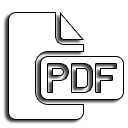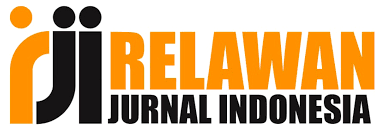S Study of the Rationality of Antibiotic Use in RSUD DR. Murjani Sampit
DOI:
https://doi.org/10.33859/jpcs.v2i1.70Abstract
Background: Antibiotics are the most widely used type of drug due to the high incidence of infection in Indonesia. From the results of the preliminary study for 3 days prospectively, as many as 44 patients who received treatment, 37 patients (87%) received antibiotic therapy. There is the use of expensive antibiotics from the 3rd generation cephalosporin group, there are 4 trade names, 2 generation cephalosporins and 1 there are 6 trade names. Expensive sulbenicin and aminoglycoside derivatives are also found, Gentamicin and Kanamycin. The relatively cheap antibiotics are chloramphenicol, tetracycline, cotrimoxazole, but various brands of these products are popular with "me too drug" being used, of course with varying prices. Government Hospital type C should refer to the use of generic drugs and refer to the national antibiotic use guidelines. Therefore, researchers want to investigate further.
Objective: To study the patterns of antibiotic use at the Dr Murjani Sampit Regional Hospital before and after the Educational Information Communication on Guidelines for the Use of National Antibiotics.
Method: This study used a retospective and prospective descriptive observational study with pre-research intervention to medical personnel on the Guidelines for the Use of National Antibiotics and Rational Pharmacotherapy, to paramedics on the stability and method of administering injection dosage antibiotics. This retrospective study used medical documents for patients at 3 months intervals from inpatients for Surgery, Internal Medicine, Children and Gynecology. Prospective study of inpatients at the UPF Surgery, Internal Medicine, Children, and Gynecology for 1 week. Analysis of antibiotic prescribing patterns and the rationality of using antibiotics based on the National Antibiotic Guidelines and Use references.
Results: The distribution pattern of antibiotic use from a retrospective study of 447 patients, there were 260 (58.1%) patients using antibiotics. Even in obstetrics UPF, 100% of the gynecologists used antibiotics. The results of a retrospective study on the rational category and the cost of using antibiotics found the rationality of the indications and patients only reached <50% of the 4 UPFs studied. The rationality of the dosage regimen was <20% and the dose regimen <10%. Average cost of antibiotics wasted Rp. 80,374 per patient. The highest wastage was at UPF Obstetrics and Gynecology of Rp. 145,223/patient, while the lowest was in UPF Children of Rp. 40,837,-/ patient. From the prospective study, there were 260 patients, 100% used antibiotics with the rationality of the indications and the patients <50%, the rationality of the drug selection was <20%, the rationality of the dosage regimen was <10%. The average wasted cost of antibiotics which became a burden for patients was Rp. 74,793,-/patient with the highest waste at the UPF Gynecology Rp. 119,272,-/patient and the lowest in UPF Children was Rp. 34,697,-/patient.
Conclusion: The pattern of antibiotic use in Dr Murjani Sampit Hospital in the 4 UPFs studied was 49.1 - 100%. There was an irrational use of antibiotics, the right indication was <43%, the right drug selection was <37.7%, the right dose regimen was <20.8%, there was a combination of antibiotic interactions <6.9% and there was a waste from the use of antibiotics Rp. 80,374,-/patient in retrospective and Rp. 74,793,-/patient in the prospective study.
Keywords Rationality, Antibiotics
References
Suryawati,1990. Pemilihan dan Pemakaian Antibiotika dalam Klinik, Lab.Farmakologi Klinik Fakultas Kedokteran UGM, Yogyakarta: Yayasan Melati Nusantara.Depkes RI.1992. Pedoman Penggunaan Antibiotika Nasional, Direktorat Jenderal Pelayanan Medik Departemen Kesehatan RI, Edisi I, Jakarta.Widayat Sastrowandoyo.1994,Penggunaan Antibiotika secara Rasional. Dalam Prosiding Pendidikan Berkelanjutan Apoteker “Penggunaan Antibiotika Secara Rasional’ Fakultas Farmasi Universitas Airlangga dan Ikatan Sarjana Farmasi Indonesia.Jawetz E, 1995, Prinsip Kerja Obat Antimikroba. Dalam Katzung BG.Farmakologi Dasar dan Klinik (Terjemahan dari Basic and Clinical Pharmacology),Edisi 3. Penerbit Buku Kedokteran: EGC: 607-612, 621, 626,6366, 638.Peraturan Lembaran Daerah Tingkat II Kotawaringin Timur no.02 , 1996, Peraturan Daerah Kabupaten Daerah Tingkat II Kotawaringin Timur no.31 tahun 1995 tentang Pembentukan Organisasi dan Tatakerja Rumah Sakit Umum Daerah dr Murjani Sampit.RSUD Dr Murjani Sampit, 1998, Laporan Kegiatan Pelayanan Kesehatan RSUD Dr Murjani Sampit, 1997.Hasan WE, 1986, Hopital Pharmacy, Fifth Edition, Philadelphia,Lea and Febiger: 35. Depkes RI, 1990,Buku Pedoman Pengelolaan Instalasi Farmasi Rumah Sakit, Direktorat Rumah Sakit Khusus dan Swasta, Direktorat Jenderal Pelayanan Medik : 11.Rupp MT and Krelng DH, 1997, The Impact of Pharmaceutical care on Patient Outcomes What Dowe know? Medscape com SCP DBI.Nanizar Zaman Joenoes, 1981, Peranan Apoteker di Farmasi Rumah Sakit. Dalam Simposium Farmasi Rumah Sakit di Indonesia. Fakultas Farmasi Unair-RSUD Dr.Soetomo: 4-7.Depkes RI, 1989, Obat Generik , Departemen Kesehatan RI,Jakarta :26-28Atasiati Idajati, 1994, Daya Kerja Antibiotika/Khemoterapetika dan Mekanisme Ressistensi pada Sel Mikroba, Dalam Prosiding Pendidikan Berkelanjutan Apoteker “Penggunaan Antibiotika secara Rasional”.Fakultas Farmasi Universitas Airlangga Surabaya dan Ikatan Sarjana Farmasi Indonesia Jawa Timur Surabaya: 8-16. Setiabudi dan Vincent HS Gan, 1995, Pengantar Antimikroba. Dalam Sulistia G Ganiswara, Farmakologi dan Terapi, Edisi 4, Bagian Farmakologi Fakultas Kedokteran UI:571-583.JusufZubaidi, 1996, Penyakit Infeksi dan Antibiotik, Majalah Kedokteran Indonesia, volume 46 nomor 9, 9 September .Stepherd C, 1998, Dangerous Drug, Antibiotic overuse is spawning superbugs. In: Morrison AM, eds Asiaweek Go Green, Hongkong: Audit Bureau of Circulations. Consumer Press. Februari 13: 32.Monnet D, 1995, Stategis to optimize Antibiotic User in Hospital. Conference News Online from the 35 th Intersrcience Conference on Antimicrobial Agents and Chemotherapy: Medscape Inc:17-20. Saryono. 2011. Mashford ML, 1991, Antibiotic Guidelines Includes Section for General Practitioners.Victorian Medical Postgraduate Foundation Inc 6thEdition, Australia:19.Chambers HF and Sande MA, 1996, Antimicrobial Agent In. In: Hardman JG, Gilman AG, Limbird LE. Goodman & Gilman’s The Pharmacological Basis of Therapeutics. Ninth edition. Mc Graw-Hill Companies: 1029-1032.Budiono Santoso, 1993, Farmakoterapi Rasional. Materi Pelatihan Penggunaan Obat yang Rasional. Laboratorium Farmakologi Klinik Fakultas Kedokteran Universitas Gadjah Mada Yogyakarta:2-3.Constantine LM and Scott S, 1991, Inappropriate Use of Antibiotics and the Rise of Resisteant Organism. American Pharmacy, volume NS31, nomor 4 April:23-25Woodley M and Whelan A, 1992, Manual of Medical TherapeuticsDepartment ofMedicine Washington University, 27thEdition, Washington: 357-359KramerI,1995, Rationalization of Drug Therapy by the Hospital Pharmacist, International Journal Clinical Pharmacology and Therapeutics, August (33):473-476Depkes RI, 1993, Petunjuk Teknis Penyelenggaraan Rekam Medis/Medical Record Rumah Sakit, Direktorat Jenderal Pelayanan Medik, Departemen Kesehatan Rumah Sakit:2-3.RSUD Dr Soetomo, 1997, Dokumen Medik Kesehatan, Panitia Medik Dokumen Medik Kesehatan, RSUD Dr Soetomo Surabaya.DoddySoetojo, 1989, Pemantauan Terapi Obat, Instalasi Farmasi RSUD Dr.Soetomo, Surabaya:5-9.Tatro DS, 1996, Drugs Interaction Facts, Fifth Edition, Facts and Comparisens St.Louis A Waltern Kluwer Company, United States of America:28,32.USP DI, 1996, Drug Information for the Health Care Professional, volume 1, 16 thedition. United States Pharmacopeial Convention,inc.Japan Pharmaceutical reference, 1993, Administration and Products in Japan, Third Edition, Japan Medical Products International Trade Association, Japan:426-429Reese RE and Betts RF, 1993, Handbook of Antibiotics, Second edition, Little Brown and Company:95-98.Wilkowske CJ, 1991, General Principles of Antimicrobial Therapy, Mayo Clinical Proc 66 : 931-941.
Downloads
Published
How to Cite
Issue
Section
License
Copyright (c) 2021 Journal of Pharmaceutical Care and Sciences

This work is licensed under a Creative Commons Attribution 4.0 International License.
















